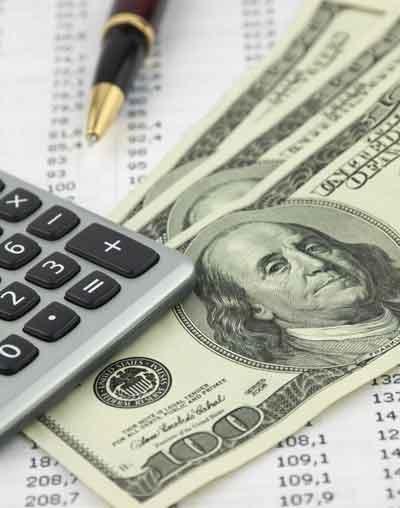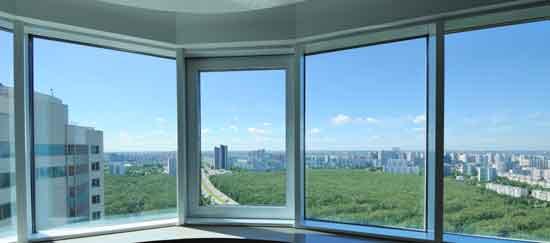Financial Resources to Support Energy Efficiency
Yvonne Hunter is co-director of the Sustainability program for the Institute for Local Government (www.ca-ilg.org) and can be reached at yhunter@ca-ilg.org. For more about the Sustainability program, visit www.ca-ilg.org/sustainable-communities.
The old saying “There is no such thing as a free lunch” is mostly true — except when it comes to investing in energy efficiency. While the “lunch” may not be entirely free, it’s certainly available at a lower cost through rebates, zero-interest loans, grants and other types of financing incentives offered by California’s energy utilities and state agencies. These incentives cover energy-efficiency projects in local agency buildings, and similar incentives are available for business and residential customers as well.
As a service to local officials, Western City periodically provides a summary of key energy-efficiency financing programs. Because these programs change over time, local officials may wish to review the available options. Additional information — including links to utility, state agency and other financing programs — is provided below.
Utility Incentive Programs
California’s investor-owned and municipal utilities offer a variety of incentives to help finance energy efficiency in local agency buildings and operations. Municipal utility programs vary by individual utility. Investor-owned utility incentives are regulated by the California Public Utilities Commission.
The investor-owned utilities, Pacific Gas and Electric Company, San Diego Gas and Electric Company, Southern California Edison and Southern California Gas Company, offer an array of energy-efficiency incentive programs. These range from rebates for purchasing qualified energy-efficient equipment to low-or zero-interest loans. The rebates help reduce the upfront cost of the equipment, thus shortening the payback period.
Energy-Efficiency Incentives for Buildings. Rebates are available for energy-efficient retrofitting of heating, ventilation and air conditioning (HVAC) equipment, lights, water and wastewater systems, motors and pumps, streetlights, furnaces, boilers, refrigeration and cooking systems. The amount of the rebate depends on the retrofit project and is usually calculated by kilowatt hours or therms saved, up to a maximum level. Eligibility generally is based on predetermined criteria, so it is a good idea to check the requirements before beginning a project. Checking with the account manager of the agency’s utility when evaluating a project is also a good approach for medium-size or larger projects.
Since lighting may account for up to 39 percent of a building’s energy use, utility programs can offer solutions and incentives to upgrade to efficient lamps and fixtures, including sensors and controls, dimmable ballasts and light-emitting diodes (LEDs), a newer energy-efficient lighting technology. Similarly, in an average office, the HVAC system may account for 28 percent of the energy use. Most utilities offer incentives for upgrading to energy-efficient equipment, including HVAC improvements and electric heat pumps.
Natural gas utilities offer rebates for new, energy-efficient equipment that uses natural gas — for example, water heaters, boilers, programmable thermostats, space heaters, swimming pool heaters and tankless water heaters. Agencies that use a lot of natural gas, such as those with central boiler systems, swimming pools or wastewater treatment plants, have opportunities to save more money and reduce natural gas usage by retrofitting their equipment and appliances to be more energy efficient.
Local agencies that do not use much natural gas still have opportunities to use natural gas efficiently. For example, they can fine-tune equipment performance and purchase energy-efficient appliances, such as gas stoves or water heaters, and take advantage of rebates when replacements are needed.
Water and Wastewater. Agencies that own or operate water or wastewater systems may be able to benefit from utility incentive programs for both electric and natural gas-powered equipment. For example, utility incentive programs are available for the purchase of more efficient pumps, motors and variable-frequency drives, as well as boilers for wastewater-system digesters.
Other Utility Incentive and Assistance Programs. In addition to incentives for retrofitting existing equipment and appliances, utilities offer a variety of other financial incentive programs.
- Financial incentives and technical energy and design assistance are available as part of new, nonresidential construction projects (sometimes referred to as savings by design).
- Utility demand response programs offer financial incentives for temporarily reducing power usage in office buildings upon request by the utility during periods of high energy demand. The programs also offer financial incentives to water and wastewater facilities for temporarily reducing usage upon request by the utility during periods of high energy demand.
- Some agency facilities may be eligible for free audits (or analyses) to identify energy-efficiency opportunities. Other agency facilities can use do-it-yourself assessments to identify potential energy savings.
- Utilities also offer benchmarking opportunities, which are ways of evaluating the energy performance of buildings, as a means of understanding building energy use and savings options.
California Energy Commission Funding Opportunities
The California Energy Commission periodically offers energy grants and/or financing programs to support investments in energy-efficient equipment and fuel-efficient vehicles, as well as alternative-energy generation projects. Specific program availability varies over time. Information about these programs is available at www.energy.ca.gov/efficiency/financing/.
Sustainable Energy Bond Program
Offered by the California Statewide Communities Development Authority and the Foundation for Renewable Energy and Environment, this program offers access to tax exempt financing for sustainable energy investments. Under the Sustainable Energy Bond Program, participating entities and organizations contract with an energy service company to complete energy efficiency and water conservation retrofits.
Improvements could include street lighting, building lighting, pumps, HVAC, system controls, boilers, chillers, ducting, windows, partial roofing, toilets and more. The program participants will receive substantial cost savings, including a contractual guarantee sufficient to cover the full cost of all retrofit work. All projects are financed through tax-exempt bonds. Information is available at www.cacommunities.org/energy-finance-programs.
Online Funding Wizard
The CoolCalifornia Funding Wizard is an online tool that identifies funding resources (grants, loans and rebates) to support energy and water efficiency, green fleets, recycling and other sustainability projects. Find more information at www.coolcalifornia.org/funding-wizard-home.
Getting Started
For those new to utility incentive or financing opportunities, a good place to start is by contacting your utility account manager. And for agencies that are part of an Energy Watch, Energy Leader or Local Government Partnership, contacting the partnership is also a good place to start.
Zero-Interest Loans of up to $250,000 Available for Local Agency Energy-Efficiency Projects
On-bill financing (OBF) is a relatively new program offered by the investor-owned utilities to provide zero-interest financing for qualified energy-efficiency retrofit projects. Local governments are eligible for loans from $5,000 to $250,000 with a loan period of approximately 10 years. Business customers are eligible for loans between $5,000 and $100,000 for up to five years. The loan is repaid through the monthly utility bill, which means that customers often experience no to little change in their utility bill until the loan is repaid; at that point their bill will decrease due to savings from the energy-efficiency upgrade.
While the potential cost, savings and payback period will depend on the individual project and utility rates, the table below illustrates a hypothetical on-bill financing project.
| Hypothetical On-Bill Financing Project | |
| Project Cost | $100,000 |
| Energy-efficiency rebates and/or incentives from utility | $25,000 |
| Loan amount (remaining cost to be funded after rebates and/or incentives) | $75,000 |
| Estimated monthly energy savings from completed retrofit project | $3,000 |
| Simple payback period (loan amount divided by monthly savings amount, which remains on the monthly bill until the loan is paid off) | 25 months |
Resources to Learn More
Institute for Local Government
- Financing Sustainability Resource Center (includes information about energy efficiency financing)
- Sustainability Best Practices Framework
- Beacon Award: Local Leadership toward Solving Climate Change
- Statewide Energy Efficiency Collaborative
Utility Energy Efficiency Information and Resources
- Pacific Gas and Electric Company
- San Diego Gas and Electric Company
- Southern California Edison
- Southern California Gas Company
- Municipal Utilities
Other
This article appears in the November 2013 issue of Western City
Did you like what you read here? Subscribe to Western City



